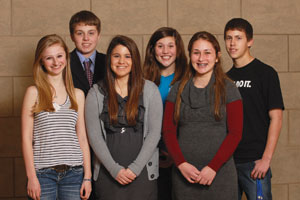Words fail to convey Joplin’s heartbreak
Last weekend I went to Joplin, Mo., on a small plane along with Hal Samuels and Jerry Bressel to deliver supplies and visit with people who live in its small Jewish community. From the air, as you fly southward, you can see exactly where the tornado traveled, because the area is stripped empty compared with the surrounding areas that appear normal. But on the ground, as we drove south from the airport on Main Street, the quaint downtown seemed fine. One wondered what the big deal is, since no signs of damage were apparent.
As we continued south, approaching the areas affected by the tornado, words seem inadequate to describe what the eye sees. For nearly six miles long by nearly one mile wide, the devastation is almost total. The images we see on TV, in the papers and on the Internet pale in comparison to the physical reality. Trees knocked down to the ground with bark peeled off. Mangled cars and twisted steel in every direction.
In the midst of this devastation people stood picking through their destroyed homes, searching the rubble for remnants of their previous lives. Among the ruins stood American flags proudly waiving and hand-made signs expressing determination and hope.
It’s hard to describe the contrast in Joplin, where one area is severely damaged yet a nearby area appears to be fine. Words truly fail to convey the heartbreak these people will face for months, if not years. Their hardship is exacerbated because the Joplin area was already hit hard economically. This disaster has now destroyed many businesses and subsequently caused the loss of even more jobs.
I know the student rabbi, Ariel Boxman, who picked us up at the airport and drove us straight to the United Hebrew Congregation. I was there often, in 1991-92, when I was a rabbinical student just like Ariel. At the temple’s entrance stands a sign “UHC Distribution Center — Please Come In.” Ariel has been instrumental in opening the congregation to help the whole community. As we walked in we saw people milling around what looked like a rummage sale picking up whatever they needed. Also, people were coming in, some from out of town, dropping off food and goods. Throughout town, we saw several tents giving away food, goods, clothes and offering free phone calls. The American spirit is alive and well in Joplin.
Our Kansas City Jewish community has begun providing support — financially and through hands-on volunteer efforts and the donation of goods. Jewish Federation Executive Vice President and CEO Todd Stettner said all the money donated to the Jewish Federation’s tornado relief fund is already being distributed through partner agencies Heart to Heart International, which provides medical emergency assistance, and Salvation Army, for ongoing relief efforts. At press time, more than $56,000 has been raised through the Jewish Federation for tornado relief efforts.
Jewish Federation is also coordinating with Jewish Family Services and an anonymous donor to the Federation’s Gesher XL emergency assistance fund to financially assist the five families in the Joplin congregation that lost their homes. Currently, JFS and the Jewish Federation are working on how to facilitate this financial help.
Joplin’s UHC congregation has asked for material support, including goods for children and household items that will be collected in Kansas City (See story Page 3). A variety of Jewish agencies in the Kansas City community are also working to directly help Jews in Joplin.
Members of Temple Israel are planning a visit to Joplin to join with the United Hebrew Congregation for one Shabbat in August. We welcome other members of the Jewish community to join us. This will not only be an opportunity for me to return to the pulpit I held many years ago, but also one for us to give our support for that entire congregation.



 When our daughter was preparing to “graduate” from the Jewish Community Center’s Child Development Center, I wrote a column supporting the benefits of sending your child to a Jewish preschool. Now she’s about to be confirmed, and I still believe in the power of Jewish preschool.
When our daughter was preparing to “graduate” from the Jewish Community Center’s Child Development Center, I wrote a column supporting the benefits of sending your child to a Jewish preschool. Now she’s about to be confirmed, and I still believe in the power of Jewish preschool.